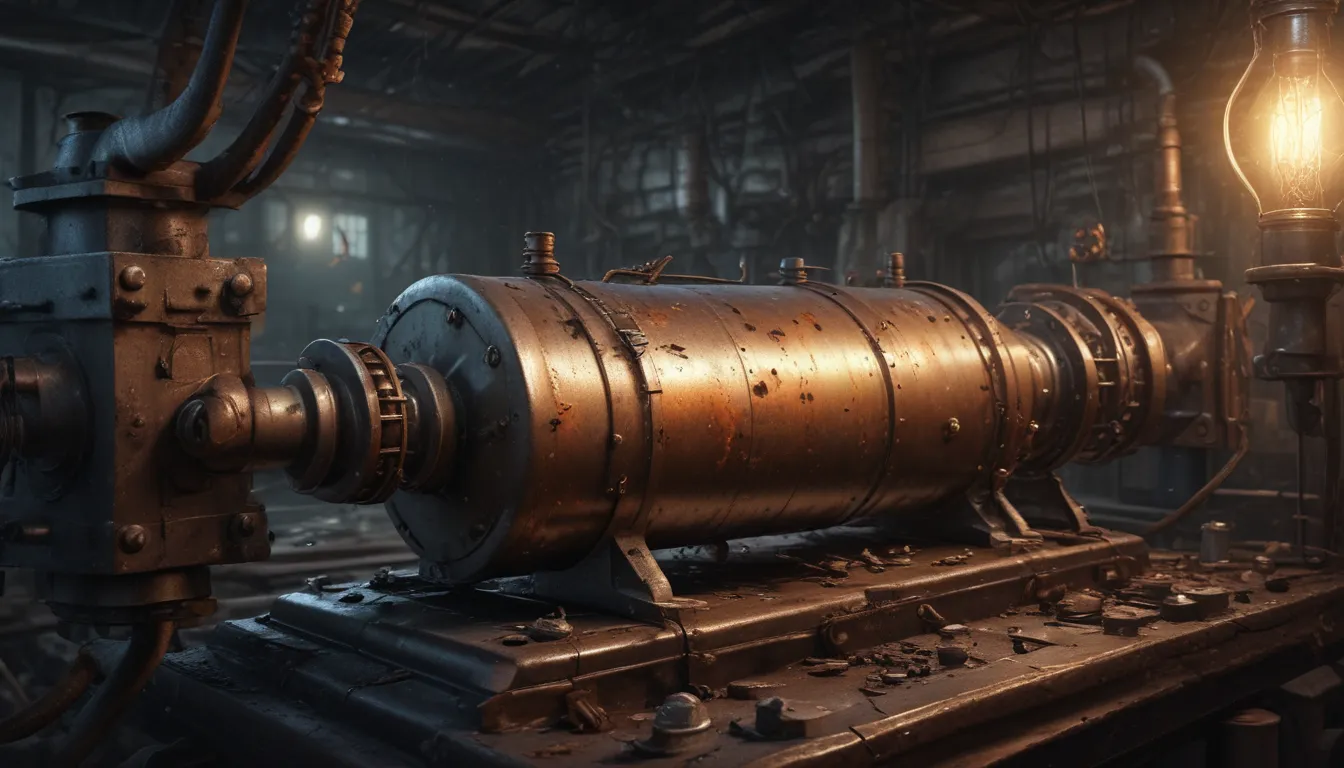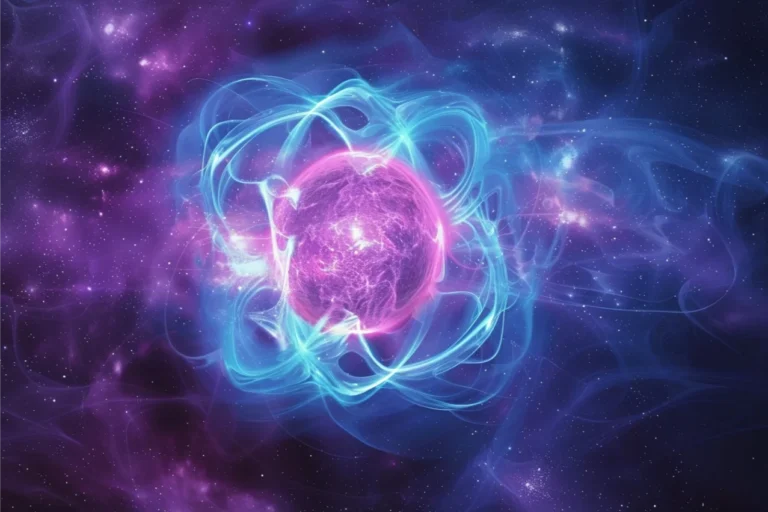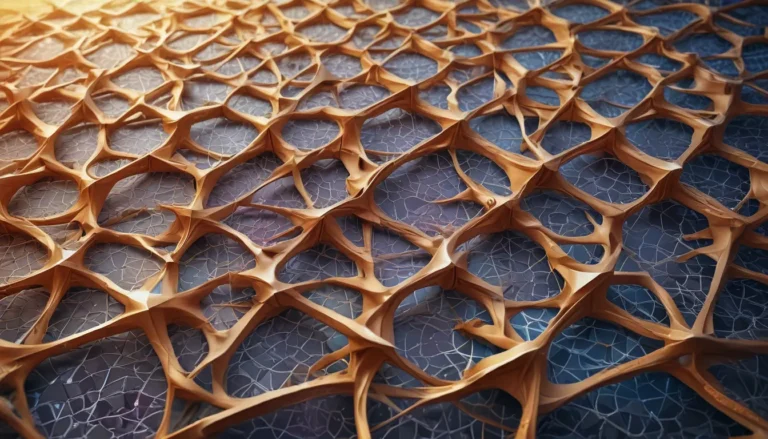A Note About Images: The images used in our articles are for illustration purposes only and may not exactly match the content. They are meant to engage readers, but the text should be relied upon for accurate information.
Galvanic corrosion is a captivating phenomenon that arises when two different metals come into contact in the presence of an electrolyte, sparking a chemical reaction that can lead to corrosion and structural damage. In this article, we will uncover nine extraordinary facts about galvanic corrosion that will intrigue you and deepen your understanding of this natural process. From its discovery to its impact on various industries, prepare to be amazed by the hidden secrets of galvanic corrosion!
Unraveling the Mystery of Galvanic Corrosion
Galvanic corrosion is a natural occurrence that occurs when two dissimilar metals are in direct contact with each other in the presence of an electrolyte, such as water or moisture. The key driving force behind galvanic corrosion lies in the difference in electrochemical potential between the two metals, leading to an electrochemical reaction and the transfer of electrons. This process can accelerate the deterioration of metals, causing pitting, cracking, or even complete failure of metal components.
Understanding the Galvanic Series
The Galvanic Series plays a significant role in predicting the likelihood of galvanic corrosion between different metals. By ranking metals based on their electrochemical potential, with the most noble metals being the least prone to corrosion, the Galvanic Series offers insights into preventive measures that can be taken to minimize the effects of galvanic corrosion.
Preventing and Minimizing Galvanic Corrosion
Various methods can be employed to prevent or reduce galvanic corrosion, including the use of protective coatings, insulating materials, or selecting metals that are closely aligned in the Galvanic Series. By taking proactive measures, the detrimental effects of galvanic corrosion can be mitigated effectively.
Impact across Industries
Galvanic corrosion is not restricted to a specific industry or application but can affect a wide range of sectors, including construction, electronics, marine environments, and even dental applications. The far-reaching effects of galvanic corrosion underscore the importance of understanding and addressing this phenomenon in diverse settings.
Implications of Galvanic Corrosion
Unchecked galvanic corrosion can have severe safety and economic implications, compromising the structural integrity of buildings, causing leaks in pipelines, or resulting in costly equipment failures. By recognizing the potential consequences of galvanic corrosion, proactive measures can be taken to prevent its occurrence.
Studying Galvanic Corrosion
Corrosion cells provide a valuable tool for simulating and studying galvanic corrosion in a controlled environment. By utilizing corrosion cells, researchers can gain valuable insights into the factors influencing corrosion and develop effective preventive measures to combat the effects of galvanic corrosion.
Ongoing Research and Development
Despite significant advancements in corrosion prevention, galvanic corrosion remains a complex topic that continues to be researched and explored. Scientists and engineers are continuously working to develop new materials and techniques to combat galvanic corrosion effectively, underscoring the ongoing efforts to address this challenging issue.
Conclusion: Unlocking the Secrets of Galvanic Corrosion
In conclusion, galvanic corrosion is a captivating phenomenon with several extraordinary facts that shed light on its complexities. By understanding the underlying mechanisms of galvanic corrosion, proactive measures can be taken to prevent its occurrence and safeguard valuable assets across various industries. By exploring these remarkable facts about galvanic corrosion, individuals can enhance their knowledge and take steps to mitigate the effects of this natural process.
FAQs: Exploring the Basics of Galvanic Corrosion
- Q: What is galvanic corrosion?
-
A: Galvanic corrosion is a process that occurs when two dissimilar metals come into contact in the presence of an electrolyte, leading to accelerated corrosion of one of the metals.
-
Q: How does galvanic corrosion happen?
-
A: Galvanic corrosion happens due to the difference in electrochemical potentials between the two metals, resulting in the transfer of electrons and corrosion of the anodic metal.
-
Q: What factors contribute to galvanic corrosion?
-
A: Key factors contributing to galvanic corrosion include the electrochemical potential difference between metals, the size of cathodic and anodic areas, the presence of an electrolyte, and environmental factors like humidity and temperature.
-
Q: How can galvanic corrosion be prevented?
-
A: Galvanic corrosion can be prevented by using insulating materials, sacrificial anodes, proper material selection, and design modifications to minimize contact between different metals.
-
Q: Where is galvanic corrosion commonly observed?
- A: Galvanic corrosion is commonly observed in structures and appliances exposed to moisture, such as ships, bridges, plumbing systems, and electrical connections.
Striving for Trustworthiness
Our commitment to providing engaging and credible content drives our mission to deliver valuable insights to our readers. Every fact on our site is contributed by individuals like you, ensuring a diverse range of perspectives and information. Our dedicated editors rigorously review each submission to guarantee accuracy and authenticity, maintaining the highest standards of quality in the content we share. Explore and learn with confidence, trusting in our commitment to delivering trustworthy and engaging insights.
Galvanic corrosion unveils the intricate relationships between metals and their environment, offering valuable lessons for professionals in diverse fields. By expanding your knowledge of corrosion and electrochemistry, you can better navigate the challenges posed by galvanic corrosion and safeguard critical assets. Embrace the opportunity to delve into the fascinating world of corrosion and empower yourself with insights to address these complex issues effectively.






